Flight Sciences
The James Watt School of Engineering has a worldwide reputation as a centre of excellence in aerospace engineering. We carry out internationally leading, high profile, application driven research as well as investigating futuristic and visionary concepts. Some of the research topics include: Aerodynamics, Aeroelasticity, Aeroacoustics, Aircraft Design, Rotorcraft, Spacecraft, Numerical Simulation and Analysis, Flight Mechanics and Flight Simulation, Aerostructures, Novel Electric Aircraft, Propulsion and Aircraft Electrification, High Speed Vehicles, Wind Tunnel Measurements, Applied Aerodynamics, and Computational Fluid Dynamics. We have strong UK and international industrial links which support our research and our facilities.
We are part of the UK Vertical Lift Network, the National Wind Tunnel Facilities, and our research goes back 75 years.
The staff of Flight Sciences contribute extensively to the aerospace and related degrees offered by the School of Engineering. They bring their experience and cutting-edge research to the lecture rooms making the Glasgow degrees special, and sought after by prospective students and employers.
Academic Staff
Quick Links
Apply for a PhD in Aerospace Engineering
Prospective research students, are encouraged to contact the Flight Sciences staff to discuss potential projects and opportunities for scholarships.
Modelling and Simulation
Modelling and simulating aerospace systems is one of the research themes of Flight Sciences. At Glasgow, there is a strong tradition in Computational Fluid Dynamics, Flight Simulation, and Dynamic Modelling of complex systems. Over the years, the Flight Sciences staff developed a reputation for modelling unconventional aircraft and spacecraft, including helicopters, electric Vertical Take-Off and Landing Vehicles (eVTOL), Hybrid and lighter-than-air aircraft, and rockets.
Experimental Aerodynamics and Fluid Mechanics
Flight Sciences is the custodian of a rich trandition of experimental work in fluid dynamics and aerodynamics. This goes back to the days of the Department of Aerodynamics and Fluid Mechanics established by Prof. Duncan in the 1950s.
Fluid mechanics is a fascinating and important branch of science and engineering, and the Aerospace Sciences Division has diverse research interests in phenomena relevant to fixed and rotary wing aircraft; aeroelasticity; flow control; vortex dominated flows; turbomachinery; renewable energy devices including wind and marine turbines; fluid-structure interactions; unsteady shock waves and detonations; shock-boundary layer interactions; low- and high-speed aerodynamics; and advanced flow diagnostics. A range of industrial organisations and government agencies provides external support for these projects: EPSRC, Rolls-Royce, SWIFT, BAE Systems, US Army, Dowty Propeller, CAA, Clean Skies, and DSTO Australia, to name a few.
Computer systems are available with mature and diverse CFD codes, either in-house developed or the latest commercially available codes, for fluid flow simulation. These are complemented with a range of specialist equipment including research microscopes, low- and high-speed wind tunnels and shock tubes equipped with diverse test rigs and state-of-the-art measurement technology such as pressures sensitive paints, particle image velocimetry, and infra-red tomography to aid experimental investigations.
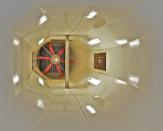
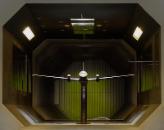
Flight Mechanics
Flight Sciences has extensive research expertise in a wide range of areas associated with the simulation and analysis of flight vehicles. Rotorcraft flight mechanics has been a particular expertise for a number of years, and this has given the legacy of mature and well validated simulations which continue to support high quality research in areas such as advanced rotorcraft configurations and pilot/rotorcraft coupling.
Some of the recent projects in this area include:
HELICOPTER FLIGHT DYNAMICS
The focus of research in helicopter flight dynamics is the mathematical modelling and analysis of novel configurations. The Division has a number of mathematical models covering the spectrum from simple low order models through to complex individual blade models with detailed rotor wake representations. These models can be used to simulate different rotorcraft configurations, including autogyros.
This is complimented by use of the industry standard package: FlightLab developed by ART. This gives a flexible simulation environment in which to study rotary and fixed wing aircraft flight dynamics. For piloted simulation, the Division has developed a fixed base research simulator using FlightLab as its real time engine. This offers opportunities for research in the areas of handling qualities, pilot interface, and control system design. The simulator uses a series of projectors to give the pilot an outside view on a 6m diameter circular screen.
Current projects include a study of the flight dynamics of novel compound configurations including co-axial rotor vehicles and thrust compounding. A baseline model of a, Agusta-Westland Lynx has been modified to represent two compound configurations allowing the benefits of these vehicles to be analysed against those of a conventional counterpart.
INVERSE SIMULATION STUDIES
In mathematical terms, simulation would normally be considered as the calculation of the response of a system to control inputs or disturbances. For an aircraft or helicopter this might be the flight trajectory or manoeuvre that results from a set of pilot control inputs. Inverse simulation, as the name implies, is the reverse of this process, in other words, given a desired output, what control inputs are required. Again, referring to the helicopter case, what control inputs must the pilot apply to fly a defined manoeuvre.
Development of inverse techniques has been the focus of considerable research in Glasgow for many years. The particular applications were initially to rotorcraft. This type of study provided valuable insight into the manoeuvre capabilities of the modelled vehicle. As well as general analysis of manoeuvrability, there were also specific applications in the study of the ship/air interface, platform operations and handling qualities. A mathematical model of the vehicle is of course required, but the inverse technique can be applied to any vehicle or system. A couple of other examples include under water vehicles and land vehicles. The UK Space Agency has funded a study into developing guidance and navigation algorithms for a planetary rover.
AUTOGYRO STUDIES
Following a spate of unexplained fatal accidents involving light gyroplanes between 1989 and 1991, the UK Air Accident Investigation Branch funded a research programme at the University of Glasgow to improve the understanding of aerodynamics and flight mechanics of gyroplanes. At the outset of the research programme in 1993, the aim was to establish the general stability characteristics of a gyroplane and then determine which aspects of its design were most influential on its dynamic characteristics. The primary output of the research with the CAA was an engineering mathematical model of the aircraft so that design features, changes and hypothetical situations could be examined in safety. The mathematical model, RASCAL, is a high-order, high-fidelity simulation previously developed at the University of Glasgow to investigate helicopter-related problems.
Ongoing research checked the fidelity of the model against flight test data gathered during a number of campaigns with two fully-instrumented light gyroplanes. The research demonstrated that the vertical location of the centre of mass in relation to the assumed propeller thrust line is the key parameter leading to aircraft instability. This was a particularly important finding since the incorporation of more powerful engines and larger propellers into gyroplane design had resulted in the propeller being raised to ensure clearance with the craft’s keel, thereby raising the centre of mass. The key output was the 2008 report to the CAA (http://www.caa.co.uk/application.aspx?catid=33&pagetype=65&appid=11&mode=detail&id=4184) recommending gyroplane design changes including lowering the keel. The report’s findings were integrated into CAA’s current British Civil Airworthiness Requirements (BCAR) Section T: Light Gyroplanes, legislation which governs the safety of gyroplanes.
As well as directed research for CAA, researchers in Glasgow have used the aircraft, and the data it produced, in studies of autogyro handling qualities, rotor aeroelastic modelling, validation of rotor inflow models, and currently, autogyro control studies.
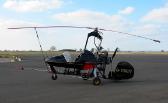
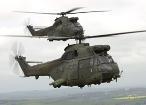
Interdisciplinary Topics & Collaborations
The staff of Flight Sciences are active in several interdisciplinary, national and international projects with some examples listed below.
UK National Wind Tunnel Facility - NWTF
GARTEUR - Group for Aeronautical Research and Technology in Europe
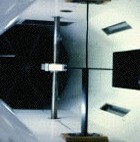
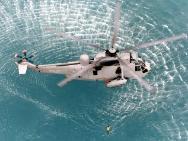
Facilities of Flight Sciences
The research facilities managed by Flight Sciences include parallel computer clusters, flight simulators and wind tunnels. These are used by the academic and research staff, post-graduate students, and under-graduates for their project work.
Details about our facilities can be found following the links on this page.




